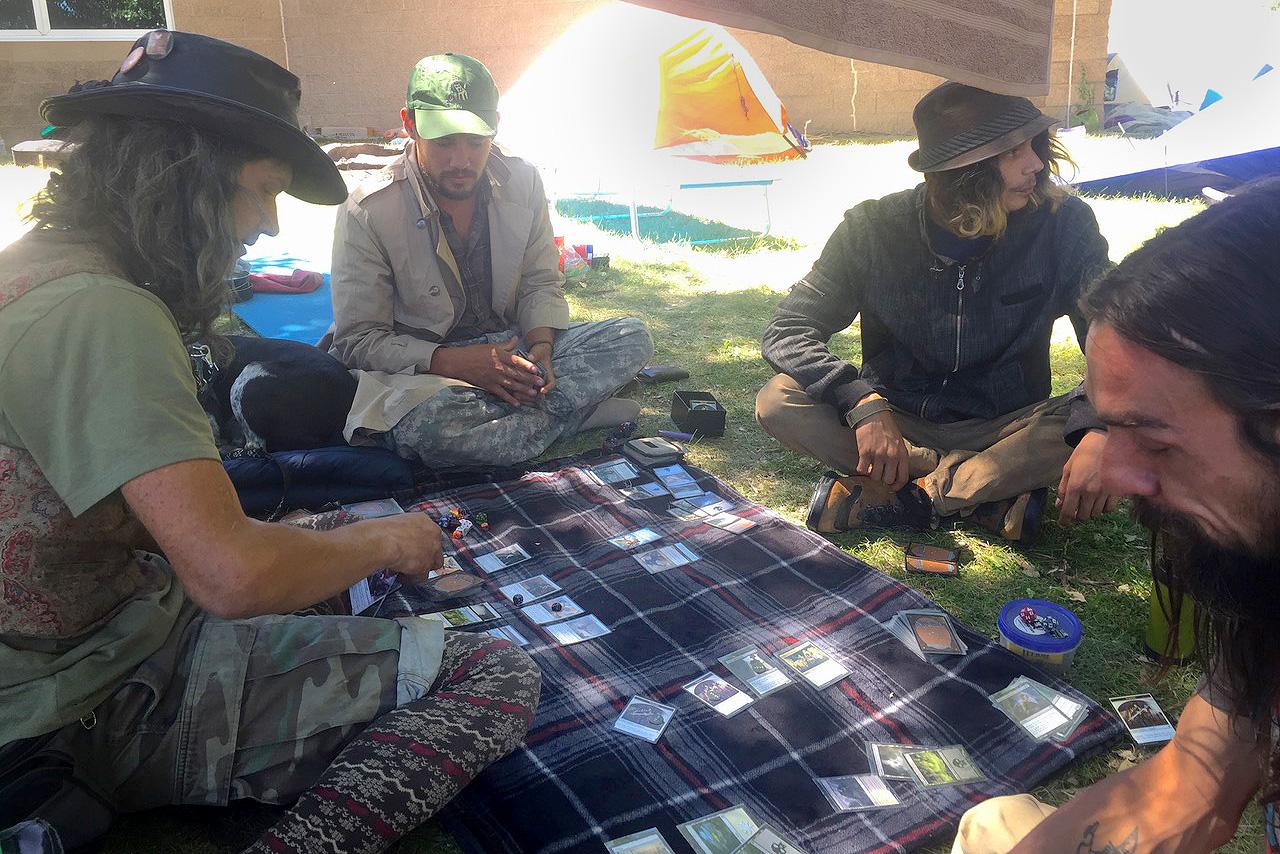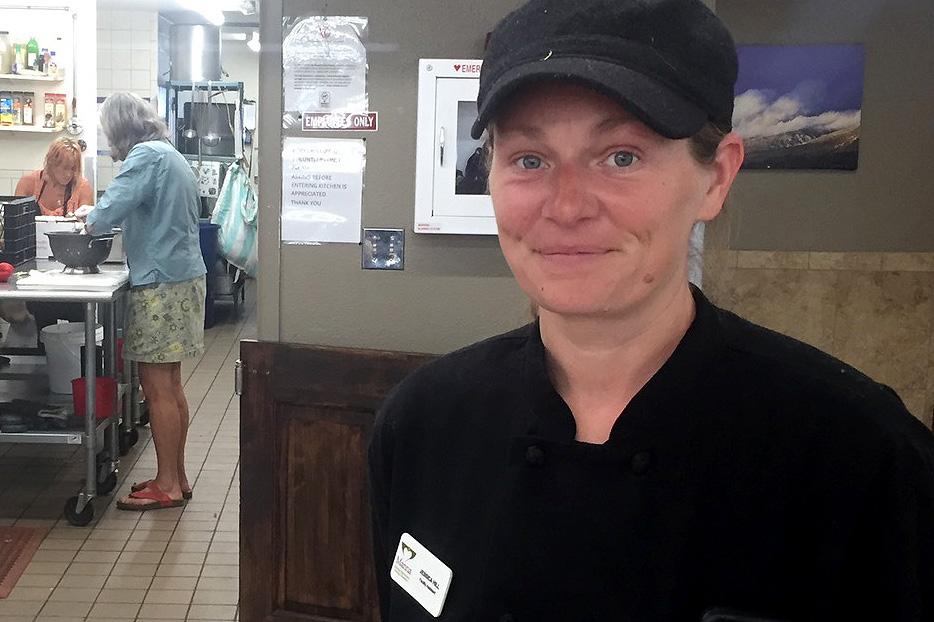

There are more than 25 tents set up on the backside of Durango’s Escalante Middle School. They’ve been here for more than a week under the shade of tall leafy trees, the homes of people with nowhere to live after being forced to leave San Juan National Forest due to to wildfire danger.
The forest was their home.
In the last few years Colorado has seen a significant increase in its homeless population, according to the Colorado Coalition for the Homeless. The problem is most noticeable along the Front Range, but it’s a statewide problem, including in Durango.
“Even in our rural areas, we’re hearing more and more about families that are being forced to double up or sleep in their cars,” said Cathy Alderman, the organization’s vice president for communications and public policy he points out that these rural communities generally don’t have the resources to handle a growing homeless population.
In Durango, Misle Roenbeck recently sat cross legged on a blanket with other young men in that park behind the school, playing the card game Magic: The Gathering. This encampment has had to move several times in the last month. And he’s been hearing about a city plan to move them to another longer-term camp soon.
“But, if not, it will continue to be just chaos,” he said. “Not really knowing what’s going on, stuck in limbo, so yeah, we’re gonna sit down and play Magic cards.”

Jessica Hill works at Durango’s Manna Soup Kitchen. She’s also one of the homeless residents of that camp behind the school. She echoed Roenbeck’s unhappiness about all this shuffling around.
“Everybody’s been really anxious and tired of being displaced,” she said, adding that every time the camp moves, the people there hear the same insults in a new part of town: “Those bums, those drunks, those drug addicts, those thieves,” she said they’ve been called. It all makes it difficult to pull yourself up.
Tensions with Durango’s homeless population have been building for years.
Karyn Gabaldon has been running an art gallery in town since 1980, and on the same busy corner for the last 15 years. She displays Asian inspired jewelry in glass cases and her vibrant paintings adorn the walls.

She said the homeless situation changed big time about four years ago. That’s when the city dropped it’s loitering ban under threat of a lawsuit. Whether it was that or an increasing homeless population overall, she noticed a drastic difference.
“Like all of a sudden I would have six people right outside my window here, whereas before we had nobody,” she said.
It made her feel unsafe closing up at night and she says her gallery business really suffered.
“Tourists had to make their way over people to get into my business, and they don’t like that,” Gabaldon said.
The issue of panhandlers downtown has forced Durango’s City Council to wrestle with homeless policies in a new way. After dropping the loitering ban, they passed an ordinance which prohibits sitting or laying on the sidewalks downtown. That seems to have addressed panhandling in that part of town, but officials face an additional challenge. The area’s severe drought and the large 416 wildfire have forced the homeless population into city limits. City Manager Ron LeBlanc said that’s speeding up the timeline of another new proposal: a camp
“There are no cities in Colorado who operate a camp,” he said.
LeBlanc calls it a fenced-in outdoor shelter, which would be located near the city’s dog park. It would have designated tent sites, port-a-potties and water. The city’s homeless could stay overnight, but would have to take their tents down during the day.
“And we’ll provide some storage lockers for them,” LeBlanc said.
Building the campground and hiring the staff to watch and maintain it isn’t going to be cheap. LeBlanc predicted it could cost in the hundreds of thousands of dollars. It’s not money the city wanted to spend, but he said they don’t feel they have a choice. They need somewhere safe for the homeless to be and are not in the market for a full-on shelter.
But Jessica Hill, the homeless woman who works at the soup kitchen, she said no thanks to the outdoor shelter.
“I think that that idea needs to be forgotten,” Hill said.
She said the location picked by the city would be too visible to the public eye and too close to so many businesses. She said the homeless community doesn’t want that and she wishes the city would spend its money elsewhere.
“The biggest need right now and I can’t stress this enough is mental help,” Hill said. “We really need some serious mental health help.”
With the nearby National Forest reopening, Hill said some of the campers will just move back into the woods.
Meanwhile the city is testing the outdoor shelter grounds -- which used to be a superfund site. They’re hoping to open it to campers in the next few months.








